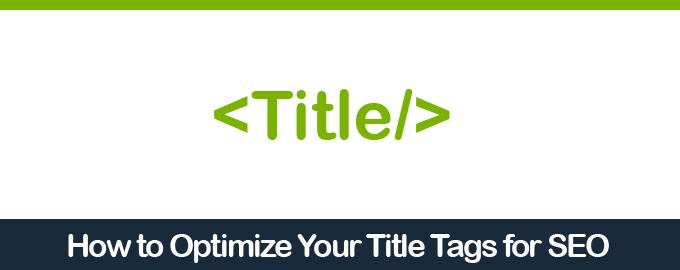Four Best Practices For Optimized Title Tags

When it comes to Search Engine Optimization techniques, the page title tag is a simple but yet important on-page SEO factor to be considered when optimizing your site. Having the right optimized title tag can be one of the main factors to help you skyrocket your site’s traffic and rank high with the big search giants like Google.
But what are title tags and why are they so important?
Well, like most titles, whether on the books, newspapers or magazines, the title tag on a web page describes what the page is about. But unlike books and magazines, the online title tags are also often used on search engine results pages to display preview snippets for a given page, and are important both for search engine optimization and social sharing. Title tags are basically the main text that describes an online document and usually appear in three key places: Browsers, Search Engine Results Pages, and External Websites.
So now that we understand what title tags are, we jump to the next big question! What makes up a good title tag that search engines will love?
Here are few best practices to consider when writing up your title tag…
1- Stay within the Character Limits
The 70 character limit is a great guideline to keep in mind for your optimization benefit. Search engines generally only display up to 70 characters including spaces on desktops and laptops, and mobile devices only display up to 55 characters. So when writing your title tags make sure they aren’t too long and within the character limits.
2- Include Essential Keywords
It is very important that every page on your site makes the most of the highest priority keywords. Make sure to determine what specific keywords you want to focus on and prioritise those keywords by placing them at the beginning of your title tags. The closer to the start of the title tag a keyword is, the more helpful it will be for ranking, and the more likely the searchers will find it relevant and click through.
3- Avoid Keyword Stuffing
When looking to optimize your title, it is normal that you aim to rank for as many keyword terms as possible, but in this process beware of repeating the same keywords over and over in the title tag just for the sake of repeating them. Keywords stuffing will serve your site no SEO benefit and could potentially raise a red flag with the search engines algorithm and prompt more detailed page reviews.
Ideally, when writing your title tags, keep in mind having a ‘keyword phrase‘ rather than just having ‘keyword‘, ‘keyword‘ ,’keyword’
4– Keep it Unique
It is very important keep in mind that the title tags on your site pages should be as unique as your pages are. In a perfectly optimized site, having multiple pages with duplicate content over and over again is not considered to be SEO best practice, and that similarly applies to title tags. When defining your title tags, ensure that each page on your site has UNIQUE title tag reflecting the top relevant keywords used on that page.
Finally, I think it is important to highlight the fact that creating compelling title tags that will drive in more visits to your site is simply not just limited to the above 4 techniques. In addition to optimization and keywords usage, I believe it is very crucial to keep in mind the entire user experience when you’re creating your title tags. The title tags are the visitor’s first interaction with your site, so make sure you keep them outstanding.